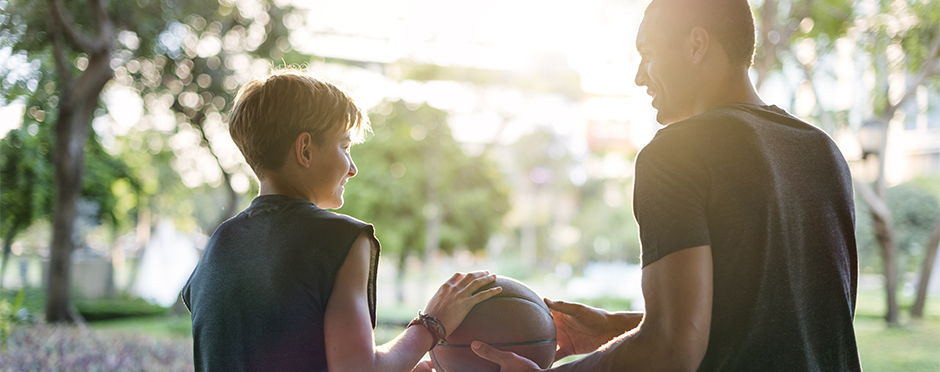
How Can Parents Help Their Student Athlete?
Leave a CommentIt has been estimated that more than 50 percent of high school students participate in a sport.1 This does not include younger children who may have previously participated in athletics.
With these considerations, many parents may find themselves worrying about their athlete, asking questions like: Are their aches and pains just muscle soreness or a more serious injury? Do I take my child to the doctor? Do they need x-rays? Should they use ice or heat for their pain?
We want to help parents keep their student athletes healthy all year long, which is why we are providing more information to help answer these common questions below:
Types of Injuries
Acute: An acute injury occurs after a one-time event such as a fall or collision. Examples of acute injuries include ankle sprains, ACL tears or concussions.
Chronic: A chronic injury is one that occurs over time and is due to overuse. It is commonly associated with repetitions of a similar movement. Chronic injuries present over time beginning with pain after activity, progressing to pain during and after activity, and eventually pain all the time. Examples of chronic injuries include stress fractures or tendinitis.
When to Seek Immediate Medical Care
There are certain instances where immediate medical care is recommended, these include:
- Unable to place weight on the injured body part
- Immediate and large amount of swelling
- Visible deformity
- Unable to move the joint
- Joint locking or instability of joint
- Back or neck pain with numbness, weakness, or pain traveling down an arm or leg
Acute Injury Management
The RICE protocol (Rest, Ice, Compression, Elevation) is useful for acute injuries that do not require immediate medical attention. Athletes should not return to sport until they have full, and pain-free range of motion of the injured area.
Ice Vs. Heat
A common query is whether to use ice or heat for an injury. For acute injuries, it is recommended to use ice first. Heat should not be applied over any swollen area. Do not ice prior to activity, and make sure there is a barrier between the ice and the skin when using this treatment. Ice should be applied for 10-15 minutes at a time. If an athlete ices during practice, they will need to warm up again prior to participating in their sport.
Heat is recommended to warm up or loosen muscles, such as for a sore neck or back. Heat should be applied for 10-15 minutes and there should also be a barrier between the heat source and the skin to prevent burns.
Rest Days
Rest days are important for any athlete. Bodies need recovery time. Rest days can also help prevent overuse or chronic injuries.
When and How to Return to Sports
When to return to sport is always a tough question to answer as it can depend on the individual athlete, the injury, and the demands of their sport. In general these rules apply:
- Full range of motion of the injured area that is pain free
- Begin with pain free activities
- Start with limited number of repetitions (ex: limit number of pitches, laps, or serves)
- Gradually progress back to more explosive skills (ex: breakaways, pivoting, and sprinting)
- Perform rehab exercises when unable to participate fully at practice
- Continue to perform rehab exercises 2-3x/week to maintain strength and flexibility and decrease risk of re-injury
Free Assessments Available at Athletico
Athletico is happy to offer free assessments for pain and injuries. Parents who have a student athlete with aches or pains can schedule an appointment and be seen within 24-48 hours of their initial request. At this appointment, one of Athletico’s licensed healthcare professionals will take a look at the condition and recommend treatment options, which may include starting physical therapy the same day in states where direct access laws are put in place. To accommodate busy schedules, Athletico is open early and late so that student athletes can be seen before or after school.
Free assessments are available both in-clinic and virtually through our telehealth platform.
The Athletico blog is an educational resource written by Athletico employees. Athletico bloggers are licensed professionals who abide by the code of ethics outlined by their respective professional associations. The content published in blog posts represents the opinion of the individual author based on their expertise and experience. The content provided in this blog is for informational purposes only, does not constitute medical advice and should not be relied on for making personal health decisions.
References:
1. “Participation in School Athletics.” Child Trends, www.childtrends.org/indicators/participation-in-school-athletics.
